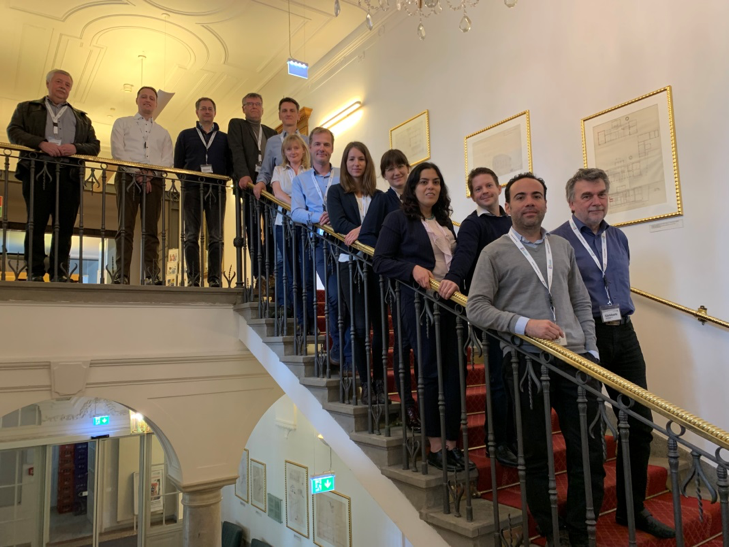Halfway through the SiTaSol project, we held a meeting in Graz to discuss how to focus our work plan for the coming months. We decided to prioritise Concept A for the direct growth of III-V/Si tandem solar cells, but we will also create a proof-of-concept for Concept B showing how the developments in SiTaSol have so far improved our technological capabilities.
Results achieved in the first 1.5 years
During the first 1.5 years of the SiTaSol project, we investigated processes leading to the economical manufacturing of GaInAsP/Si tandem solar cells with an efficiency potential exceeding 30%. This included the design and manufacturing of a new high throughput MOVPE reactor, currently used to develop GaAs with growth rates exceeding 100 µm/h as well as GaInAsP compounds, with approximately 1.7 eV bandgap, suitable as top absorber above a Silicon bottom solar cell.
The bottom solar cell consists of a silicon wafer with a diffused or implanted pn-junction. For the direct growth of the III-V compounds onto this Silicon bottom cell, it was important to find economical processes for preparing the surface with very low roughness and defined surface step structure. The typical polishing steps used in the microelectronics industry were not compatible with the solar cell cost targets, but we could identify a process which allows significant cost reduction, and it has been already shown that low roughness values in the nanometer range are achieved with this process, as well as Galliumphosphide growth with low defect density. This is a very encouraging result for our Concept A approach in which the III-V layers are grown directly on Silicon.
The development of the Silicon bottom solar cell targeted higher current densities by using light trapping structures on the rear side. Here the process evaluation is still ongoing, but we could identify processes which are leading to self-organized nanostructures, with optimized size distribution to scatter and reflect light, which is transmitted through the Silicon solar cell.
For our Concept B, the III-V layers are grown on GaAs using a sacrificial layer, which allows lifting the III-V solar cell structure after the growth, and transferring it onto a Silicon bottom solar cell. We have been working on wet-chemical as well as laser lift-off and have found that the removal of the III-V layer stack is possible with both methods. But currently one of the main challenges is the fragility of the lifted layers which tend to break into little pieces. We are therefore working on methods which allow attaching the III-V layer stack to the Silicon bottom cell before the lift-off.
This attachment process is often also referred to as bonding, and one of the approaches being investigated in SiTaSol is spray pyrolysis of a transparent conductive oxide layer, which has sufficient mechanical stability and forms the electrical contact between the III-V and Silicon cells. Here first results have proven that ohmic contacts can be formed to p-GaAs and n-Si and that the interface is sufficiently stable for further processing.
Both solar cell Concepts A and B require additional manufacturing steps for the formation of metal contacts and anti-reflection coatings. Here we are investigating ink-jet printing including Ag and also low-cost metals like Cu. Sintering of the metals has been developed to achieve low resistance contacts and contact resistance of 10 mOhm*cm2 has been achieved for a printed Cu contact on n-GaAs.
In addition to the technological process development, a detailed life cycle assessment was s performed for the different process routes, leading to III-V/Si tandem solar cell devices. So far no blocking points have been identified for the technology, and first results are encouraging showing that these high-efficiency photovoltaic devices could outperform conventional Si solar cells in terms of greenhouse gas emissions. We are committed to developing technologies which help to increase the performance and reduce the environmental impact of photovoltaic energy conversion.
